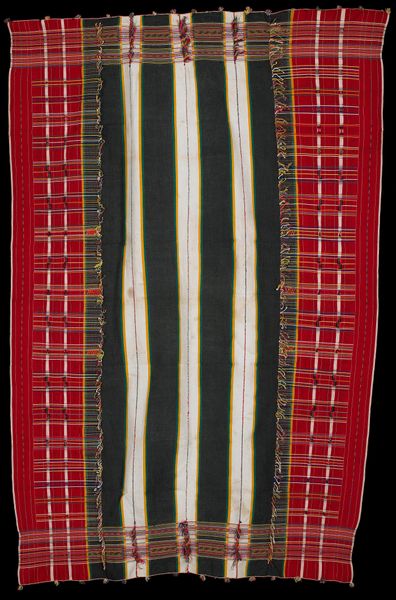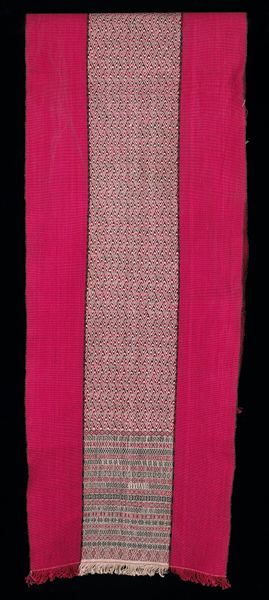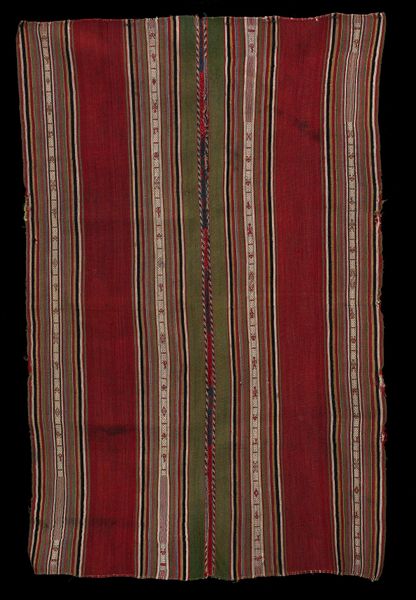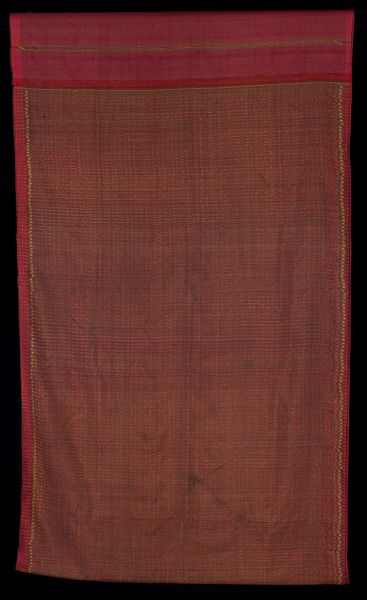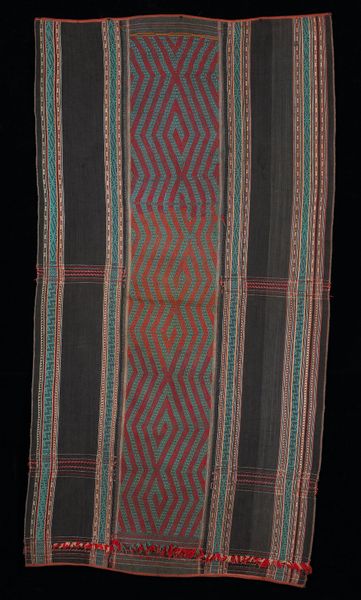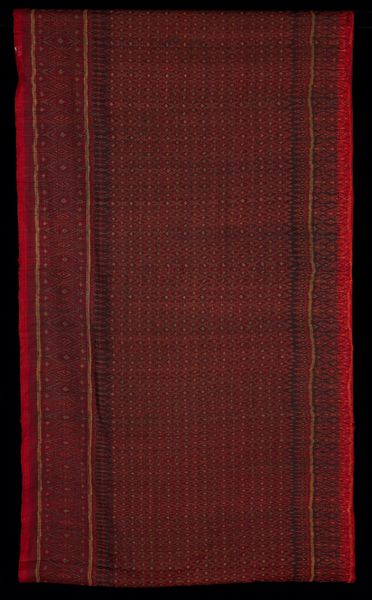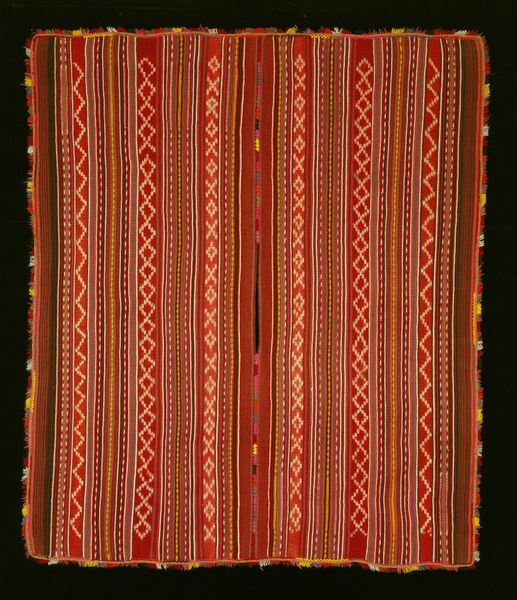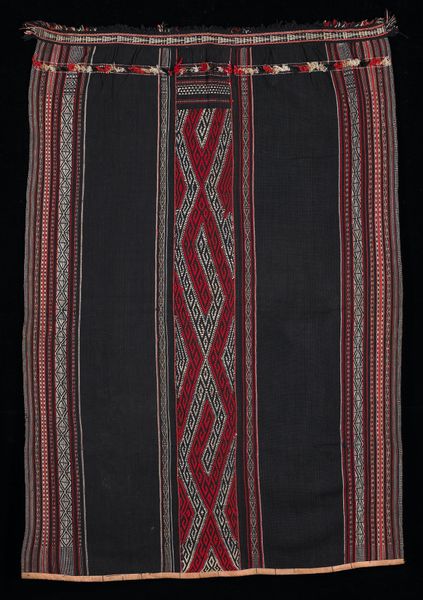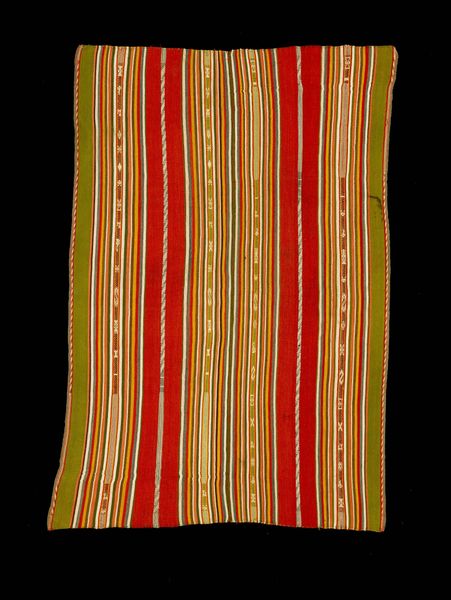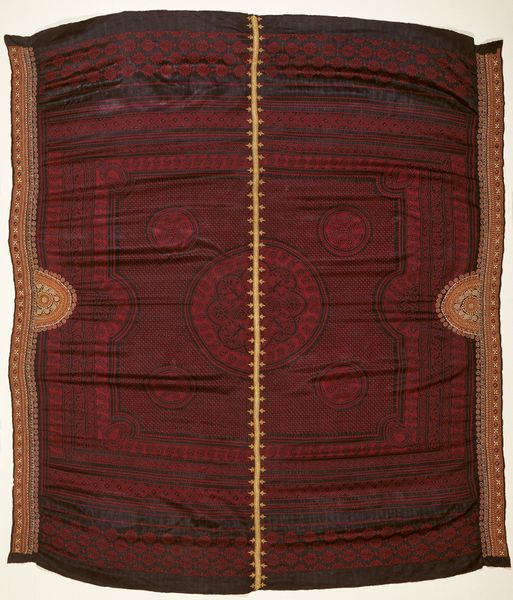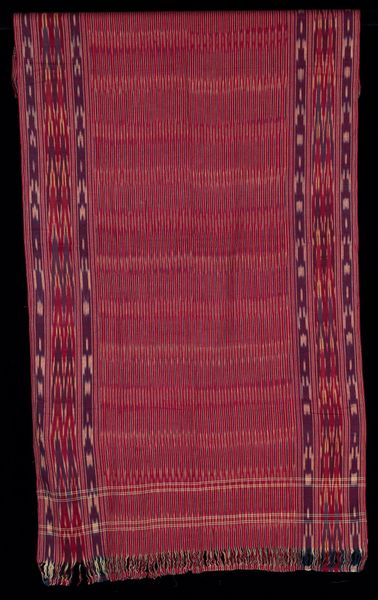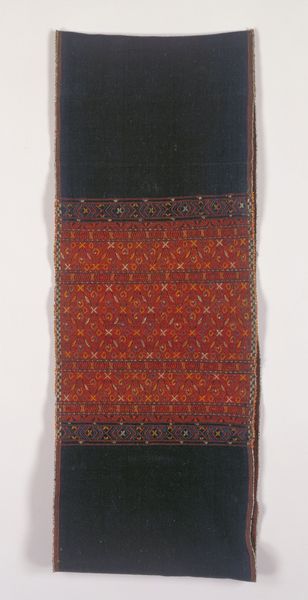
fibre-art, weaving, textile, cotton
#
fibre-art
#
asian-art
#
weaving
#
textile
#
geometric pattern
#
geometric
#
line
#
cotton
Dimensions: 120 3/8 x 29 1/8 in. (305.75 x 73.98 cm) (irregular)
Copyright: Public Domain
Curator: Looking at this work, entitled "Wrapper," which we date to the 20th century, I am struck by its graphic power and cultural significance. It is part of the museum's Asian art collection and woven of cotton fibers. Editor: Yes, it really stands out. My initial impression is the bold color palette. The reds and darker stripes give it a very strong presence. It looks both simple in its design and rich in texture. I want to touch it! Curator: I understand the impulse. Consider this not just as decoration but potentially an item of clothing, or perhaps something used in ceremonial practices. The museum context may remove the utilitarian or ritual use, but the visual evidence suggests this possibility. Editor: That's what fascinates me about textiles; they embody labor and intimacy in ways other media often don’t. How this 'wrapper' might have functioned is connected to identity, possibly social status, gender... even resistance. The vertical stripes with lines of non-Roman script are particularly interesting. Do we know where it's from and can that writing be translated? Curator: While the precise place of origin remains uncertain, similar pieces can be traced to Southeast Asia. As for the writing, deciphering it would provide critical information about the textile's purpose and the community it served. It’s probably a religious script, but that is preliminary speculation on my part. Editor: Even without translation, the presence of the text asserts a narrative. It moves beyond mere pattern into something imbued with meaning and cultural encoding. The geometric patterns running along the borders create an additional layer of visual information. It is tempting to seek correlations between similar surviving artworks, colonial histories, and contemporary accounts, to imagine how people have related to these objects as repositories of meaning. Curator: Absolutely, that layering is key. As a museum object, we try to ensure that "Wrapper" can spark inquiry, and ideally foster cultural respect through art history, social research and public programming. Editor: Indeed, art history can assist contemporary understanding; by learning the cultural contexts we may approach social and aesthetic considerations that illuminate cultural, gender, and societal stories behind woven forms and allow an artwork's layered narratives to promote dialog across cultures and history.
Comments
No comments
Be the first to comment and join the conversation on the ultimate creative platform.
